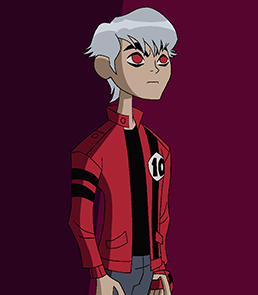

In the second novel, Michael Crichton takes the blame of the wrong theory, that T. This way the threat to her territory was eliminated. This may be why, instead of the Tyrannosaurus eating Grant as well, it only gave a roar to scare him out of her territory. Supporting Levine's theory, in Jurassic Park the Tyrannosaurus, when it escapes from its paddock, eats Donald Gennaro which may have satisfied its hunger. rex gives a loud roar to scare its prey into revealing their position by running away. Alan Grant's theory is that the Tyrannosaurus may not be able to see you, so to counteract this, the T. rex by freezing with: "the only reason it would not eat you is if it was not hungry." Richard Levine explains the previous instances in which people escaped from the T. rex wasn't able to see non-moving creatures, it would miss most of its prey. Richard Levine, this is very unlikely because many animals (including humans) freeze or play dead when they are scared. rex in the novel, and the first and third movies.īut, as stated (in the second novel) by Dr. Alan Grant uses this knowledge to escape from the T. Alan Grant states that the sight of Tyrannosaurus rex is based on movement, so if you don't move the animal won't see you. rexs in The Lost world: Jurassic Park and the sub-adult male in Jurassic Park III), while females are typically molted brown, (female T. They also have a large throat pouch that females seem to lack. Males are slightly smaller than females, and are a molted green in color. Females are also brown in color than males, and somewhat larger. Males also have a tendency to have visible facial scaring (possibly due to battles over territory with other T. Males have more prominent lacrimal ridges than females. The infant to appear in the second film appeared to be no more than 3 feet tall and just 6 feet long. The sub-adult male to appear in the third film was listed at 37 feet long and only about 10 feet tall at the hip (inaccurately measured at 14.5ft at the top of the skull, which is not a standard form measurement). Tyrannosaurus Rex is described as being capable of running as fast as 32 mph by John Hammond.Īs far as size goes, of the five Tyrannosaurs to prominently appear in the series, the adult female seen in the first film was 40 feet long and 16 feet tall, making her one of largest predators to appear in the Jurassic Park trilogy, although the size of the animatronic contradicts to this fact (see Events on Isla Nublar). Note: This article deals with the creature seen in the Jurassic Park franchise, and may have some information that doesn't correspond to what information is available on the actual dinosaur. Although T-Rex is the most widely used spelling, Park Pedia shouldn't foster scientific illiteracy. The InGen Field Guide is one of the few pieces of Jurassic Park media that uses the right names. Therefore, the taxa be written like this: All binomial nomenclatural taxon should be written in italics. That letter is followed by a period, not a "-". In that case, only the first letter of the Genus name is written.

In many cases the (mostly long names) are shortened. Genus names must be written with a capital letter but the species name don't. Tyrannosaurus is the genus name, while rex is the species name.

Dinosaur names are created according to the rules of the Binomial nomenclature. In most Jurassic Park media and film subtitles the creature is called T-Rex or T. Michael Crichton called the creature Tyrannosaurus Rex, or for short T-Rex, in his novels. This has caused Tyrannosaurus to be the most misspelled dinosaur name. However, most people don't know the spelling rules for scientific species names. For example, most people don't say Triceratops horridus or Stegosaurus armatus. Tyrannosaurus rex is the only dinosaur of which the Species name's well known.


 0 kommentar(er)
0 kommentar(er)
